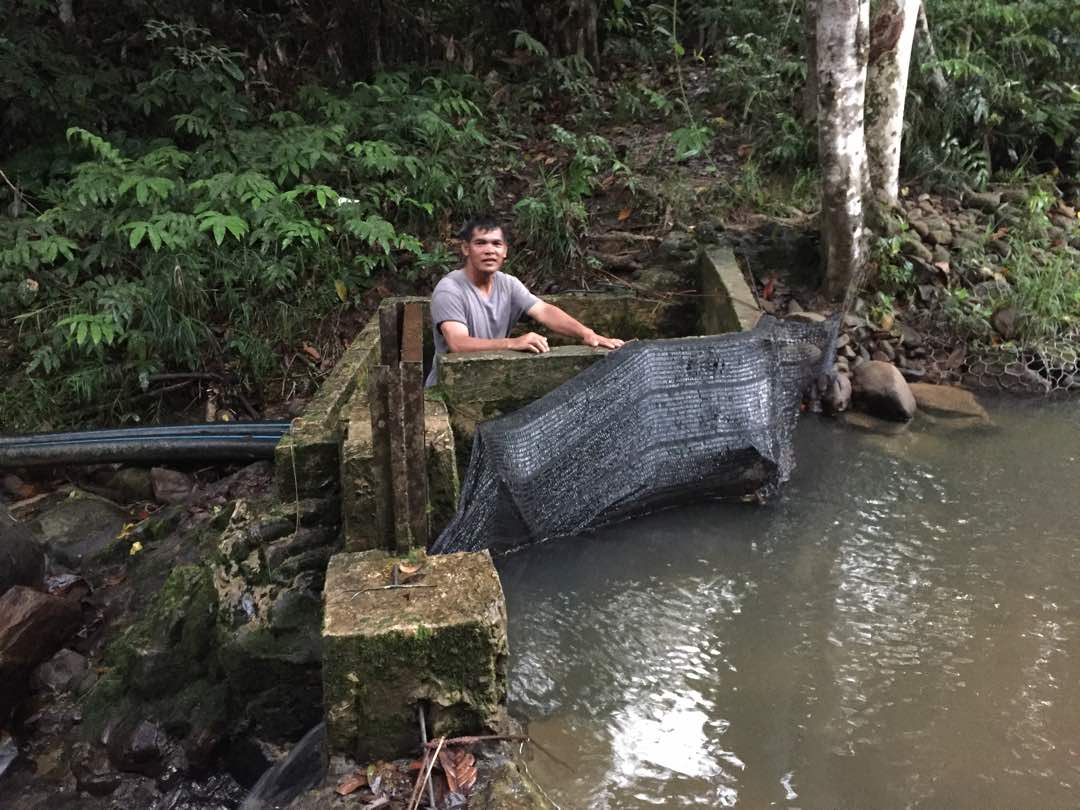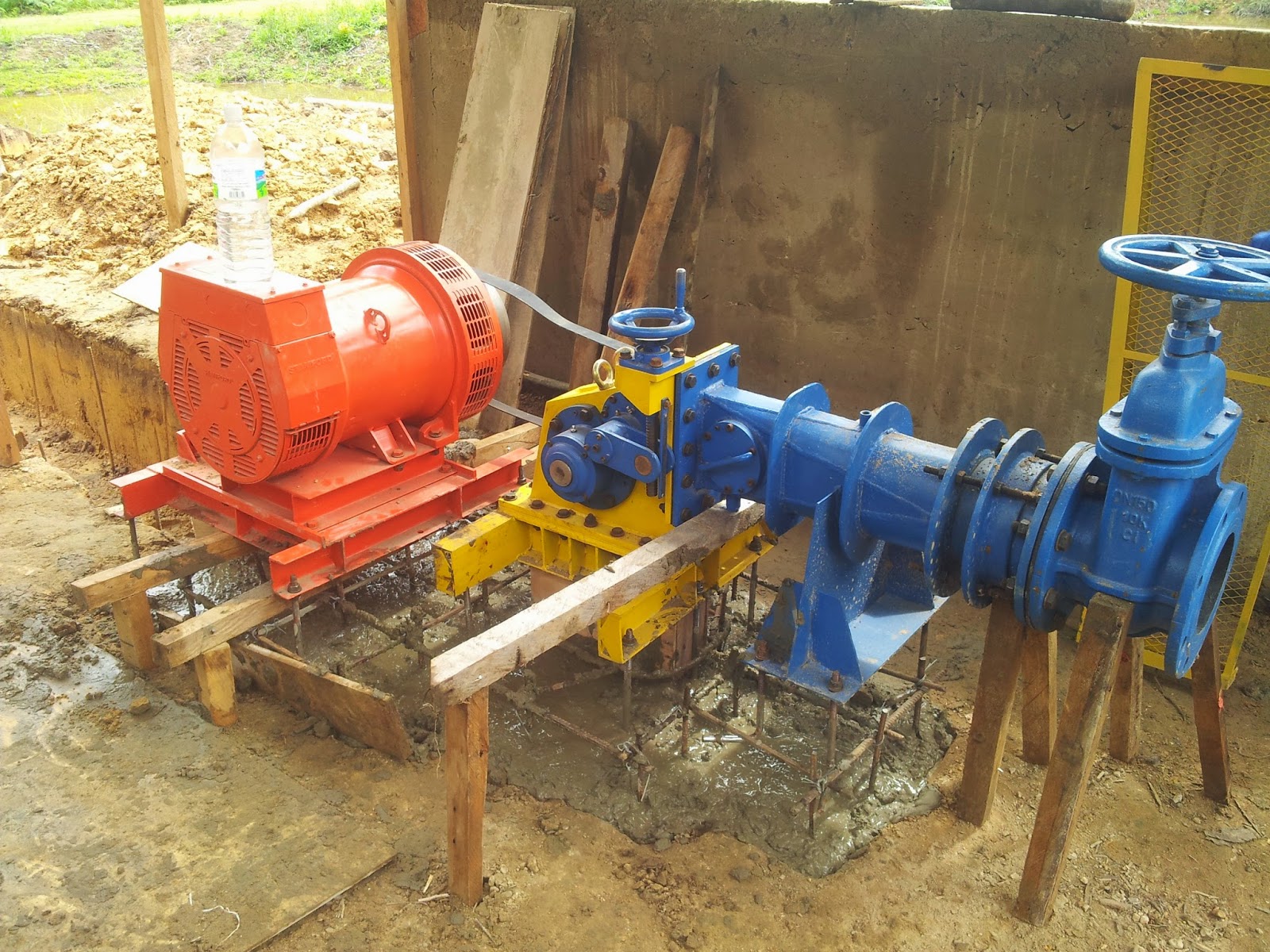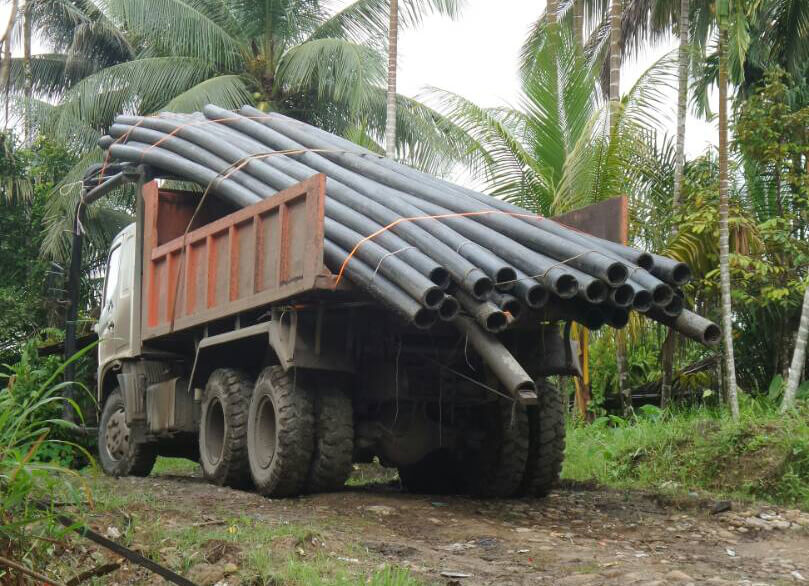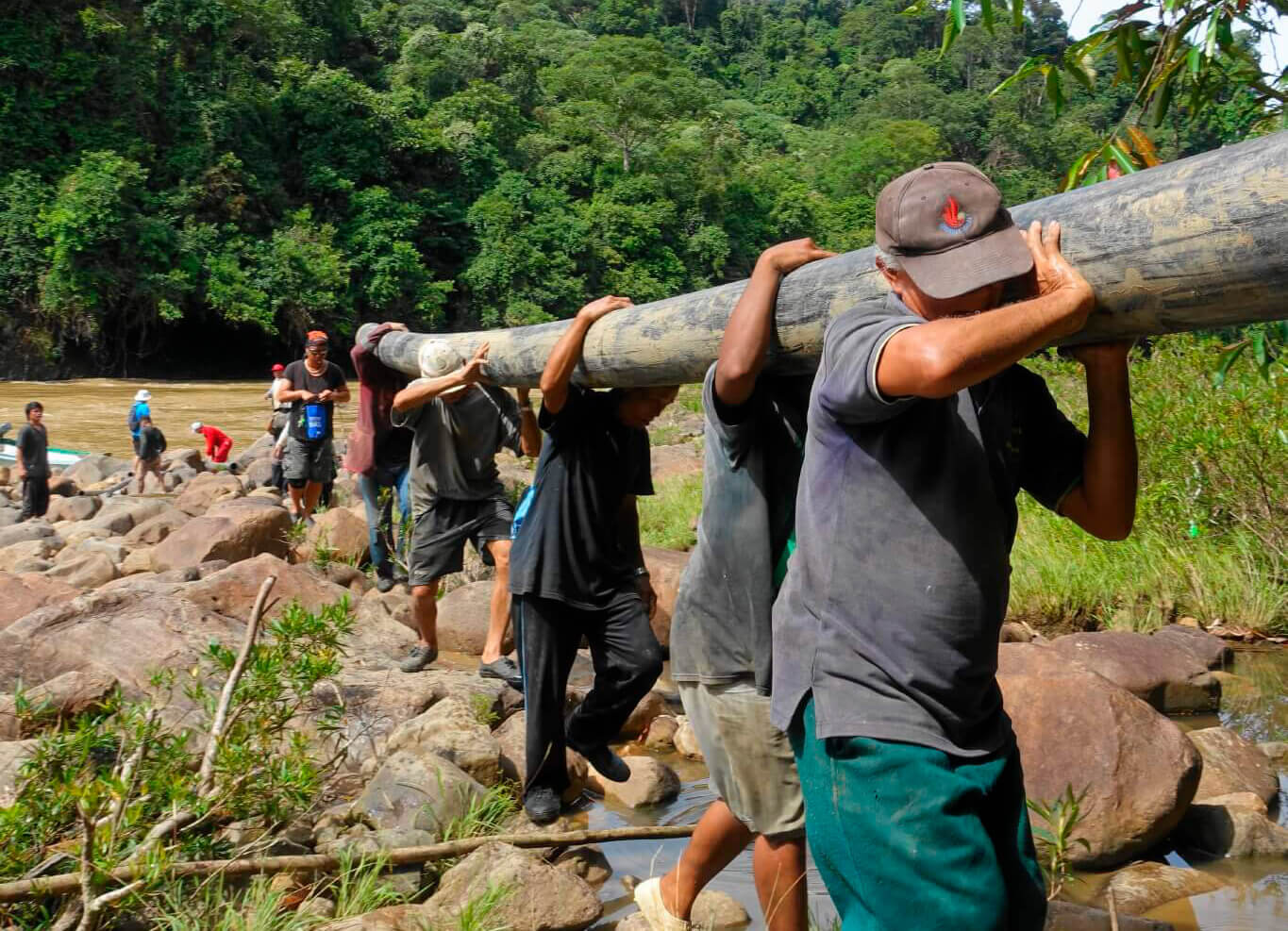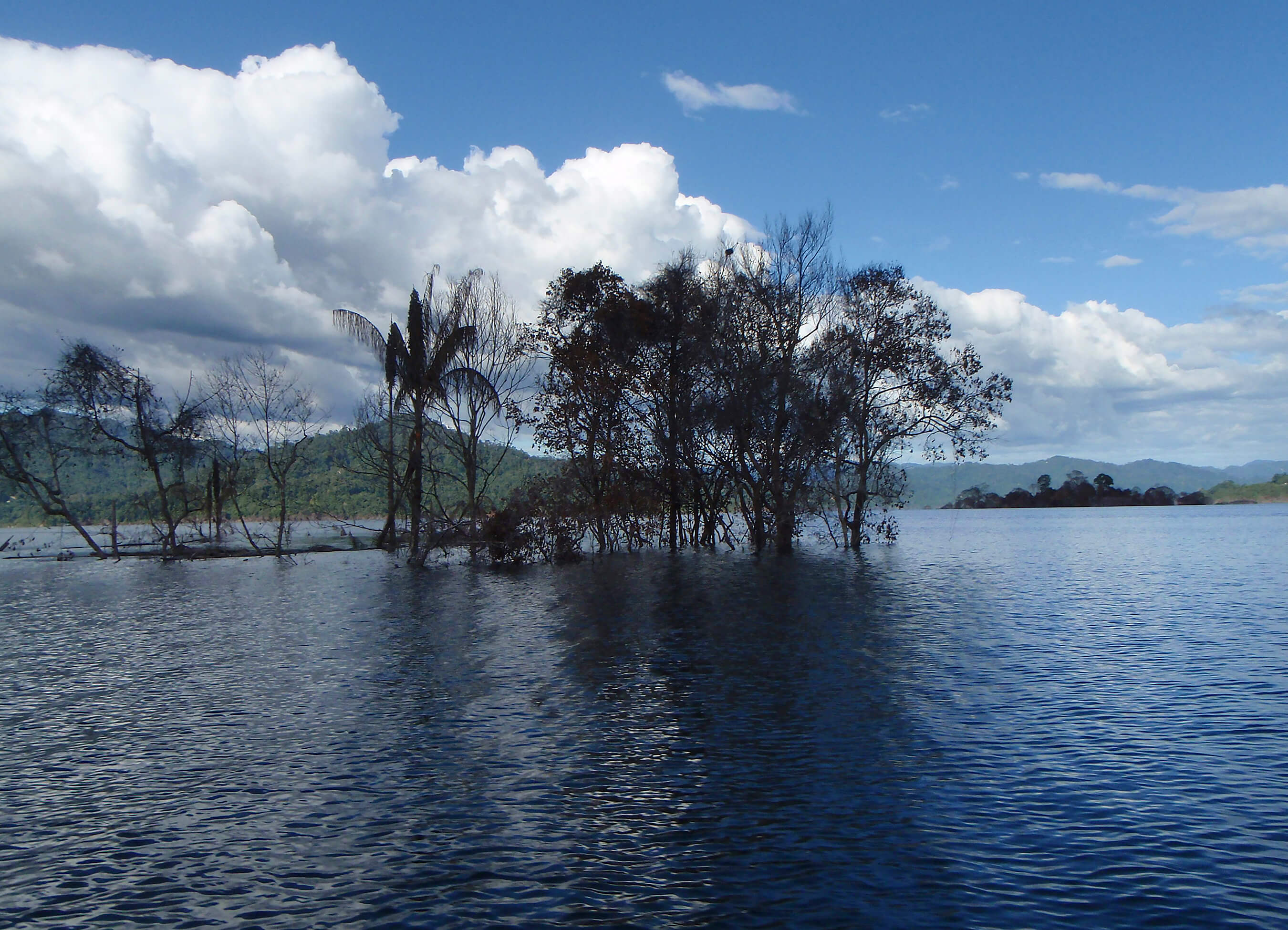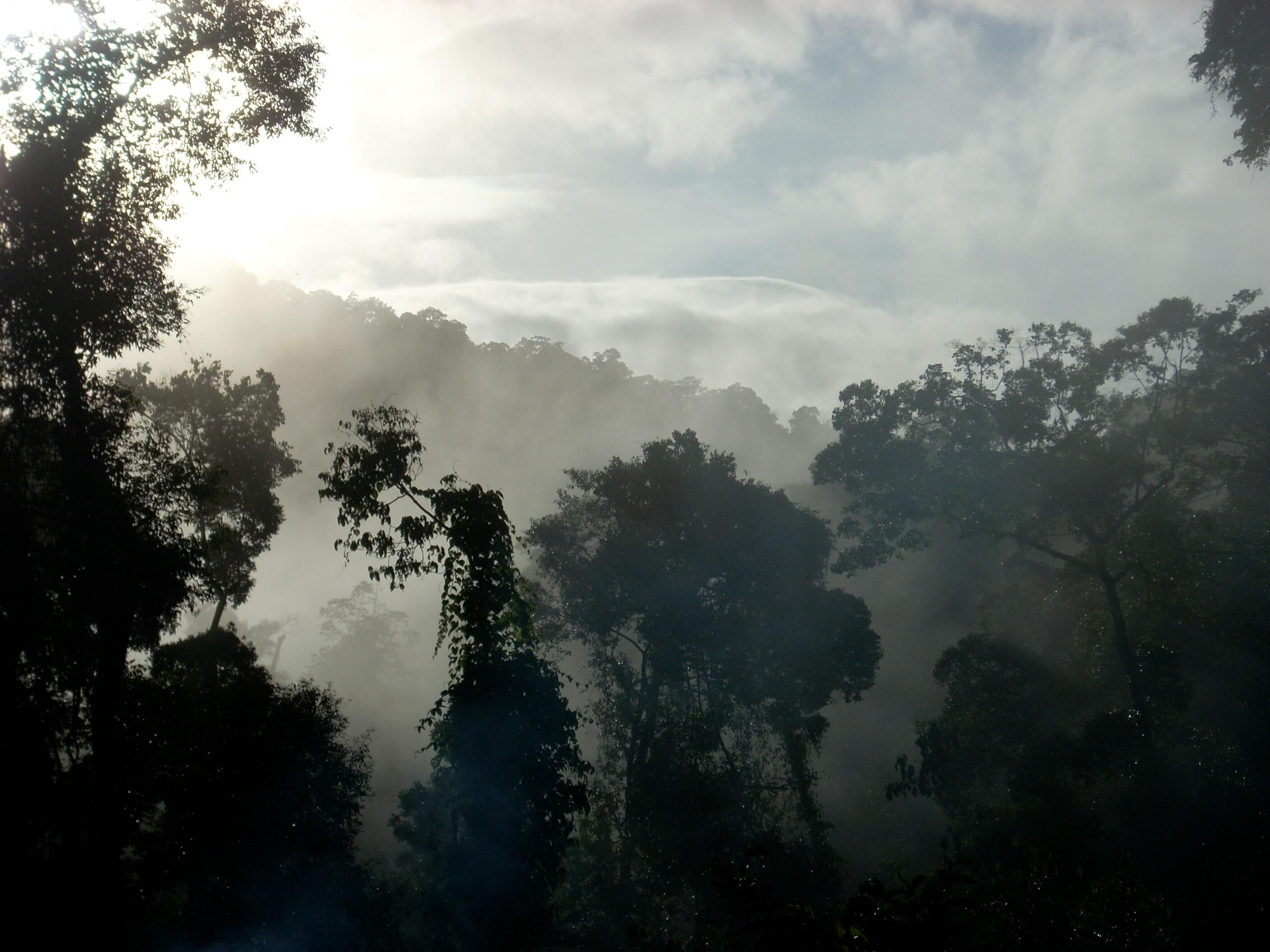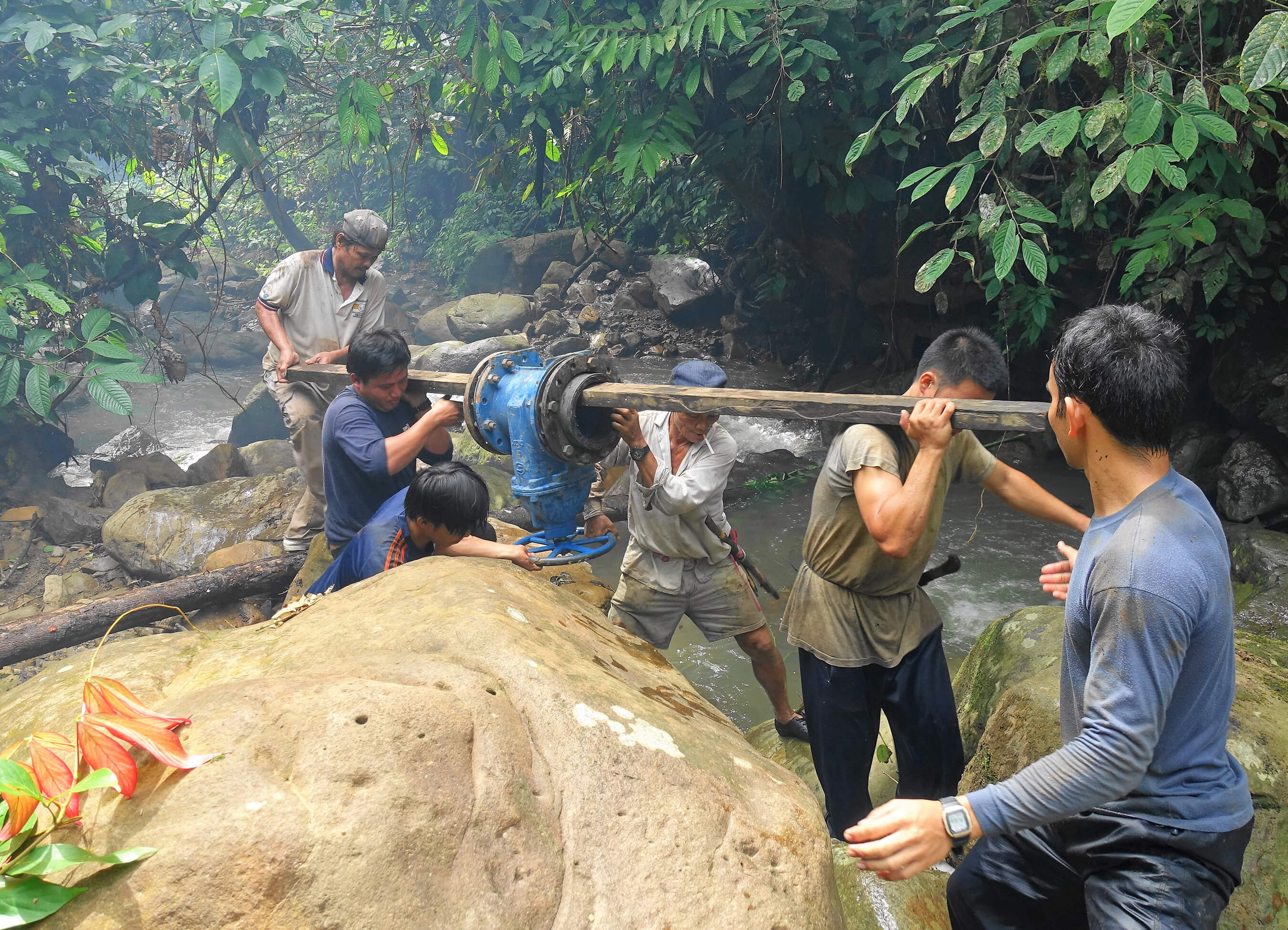
Renewable energies in the rainforest
The Baram river is the second biggest river in Sarawak and its banks are home to some 20,000 indigenous people who live off fishing, the cultivation of rice and the rainforest. After successfully warding off the planned mega-dam on the Baram, they looked, together with NGOs and scientists, at sustainable development options for the region. Together, they ascertained that micro hydro dams are the least invasive means of providing the communities with electricity while, at the same time, protecting the water catchment areas of the Baram and its tributaries. Since 2017, the BMF has been assisting villages in the region with the changeover from diesel generators to clean and renewable energy through the construction of micro hydro dams.
Resistance to the Baram Dam
In 2008, the government's plans to construct at least 12 inland dams became known. The Baram Dam was to be constructed in the Bruno Manser Fund's project area, with a reservoir that would flood more than 400km² rainforest and necessitate the resettlement of up to 20,000 indigenous people. Accusations of corruption relating to the energy projects, a political switch and, above all, massive protests by the local population, with vigorous support from the BMF (link to Rainforest, not dams), finally culminated in the abandonment of the mega dam project and the success of the indigenous inhabitants of the Baram region.
Energy supply in the rainforest
The local population thus fought decisively and successfully against the non-transparent energy policy that would have demanded great sacrifices on the part of the environment and civil society. Despite this, they still have a desire to develop and benefit from a safe and clean energy supply.
It has become clear from consultations with the population and from scientific studies that micro hydro dams and, at times, solar energy constitute the best solution for an affordable and sustainable energy supply in the rural areas of Sarawak.
Sustainable
development and participation
Micro-hydro dams are eminently suited to promoting the sustainable development
of a village and are thus supported by BMF in the project area.
Ecological
This technology necessitates and promotes the protection of the forest-covered catchment areas for the micro hydropower plant, and the small size of the plant means that it scarcely impairs the ecosystem. An intact water catchment area is, indeed, a prerequisite for the long-term serviceability of a micro-hydro dam, and the construction of such a dam provides additional motivation for the local population to protect these areas.
Social
Since they generate electricity round-the-clock, micro hydro power plants open up further development options such as access to the internet and communication. These decentralized energy systems are managed by an energy committee set up within the village. The turbines are manufactured locally and the trained committee members can carry out maintenance and repairs themselves. Overall, the self-sufficient energy systems can be completely managed by the village itself; neither political pressure nor world market prices can have a negative impact on the villages' energy supply.
Economic
Micro-hydro dams offer independence from oil price fluctuations and from the timber companies that have previously supplied rural areas with petrol at inflated prices for the generators that are in widespread use. They also save the villages the costly and time-consuming task of transporting diesel or petrol from the logging camps to the village.
Implementation
BMF is working together with local partners on implementing the project. Before the micro-hydro power plant is built, the site is first surveyed and examined for suitable tributaries, with the entire community participating in the work. Together with local engineers, the community then constructs a small reservoir, water pipes to the turbine, a power house and a local power grid to connect up the households to the system. In 2017, Long Liam was the first village to start building a micro-hydro dam.
Further information

